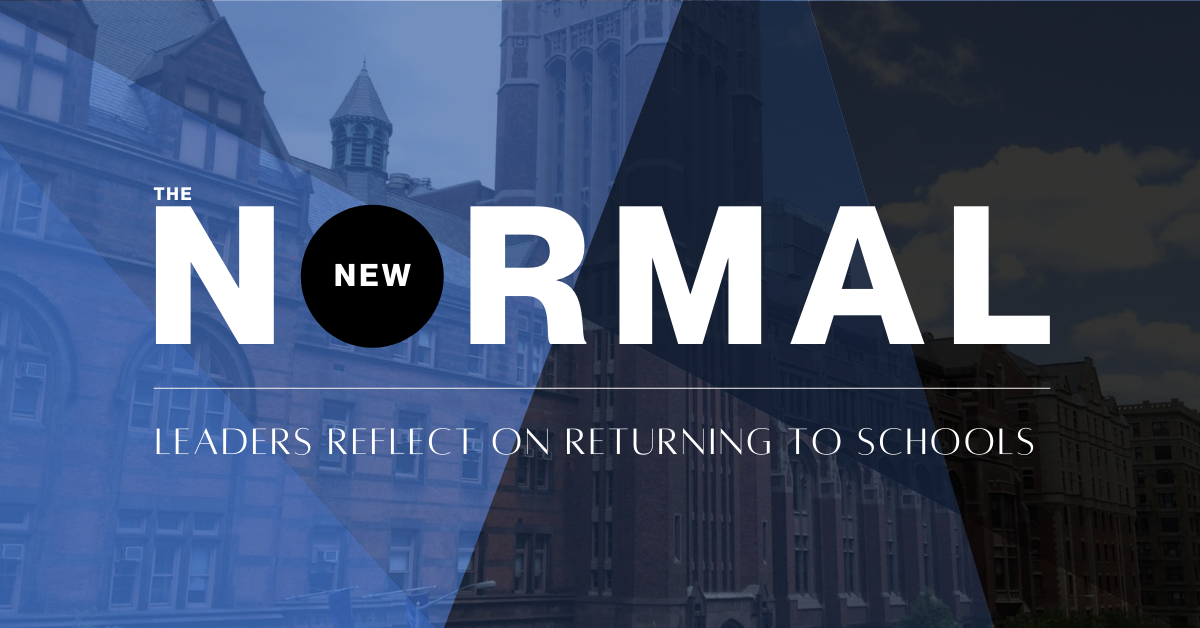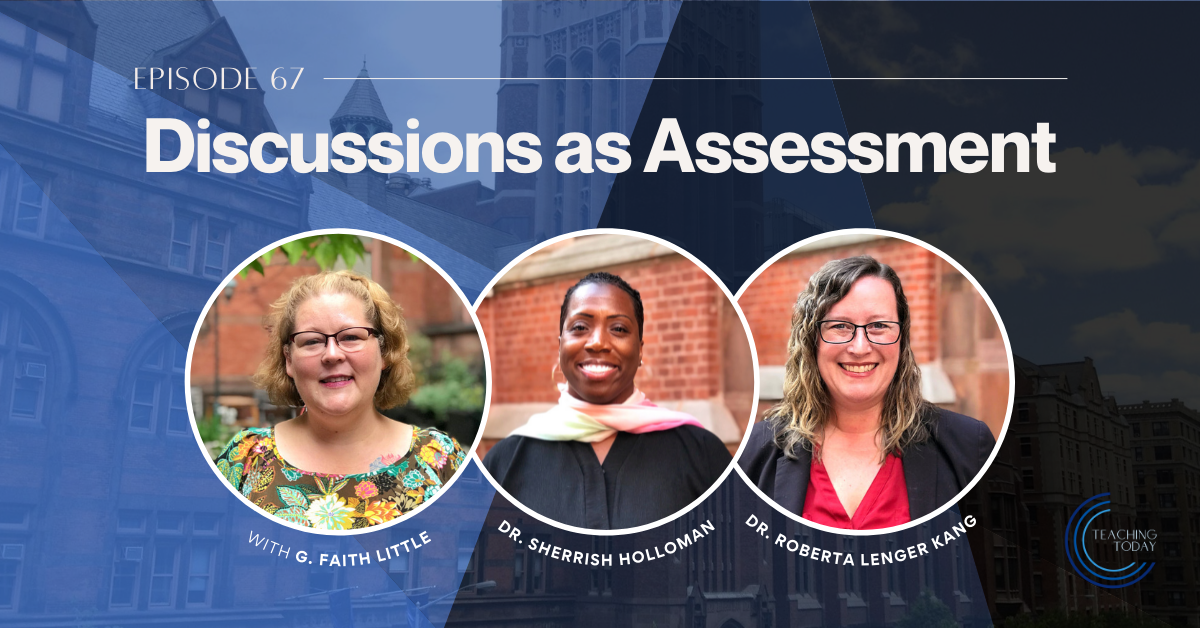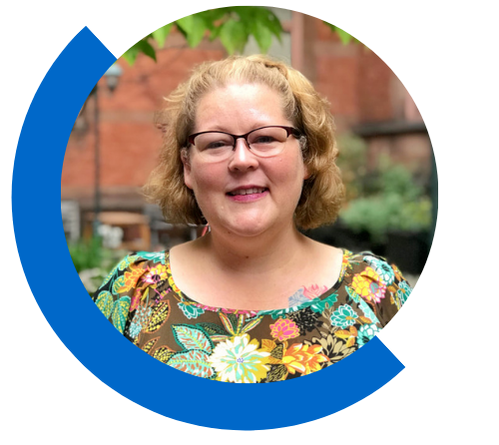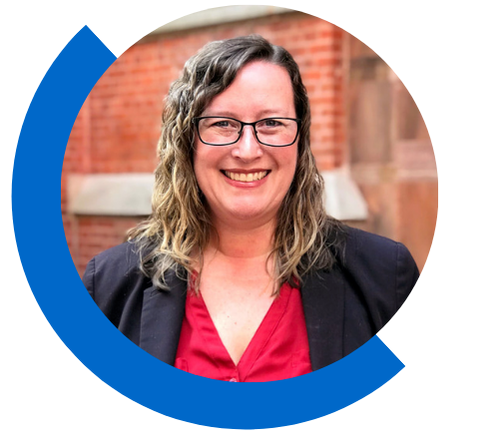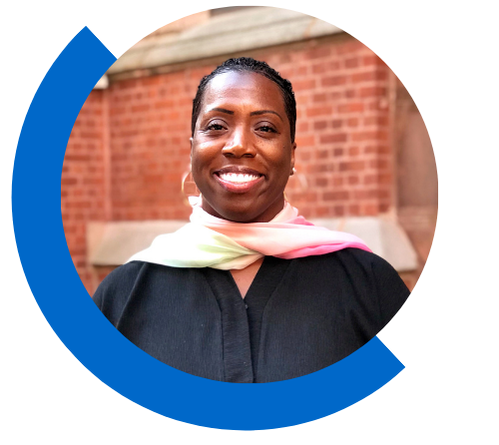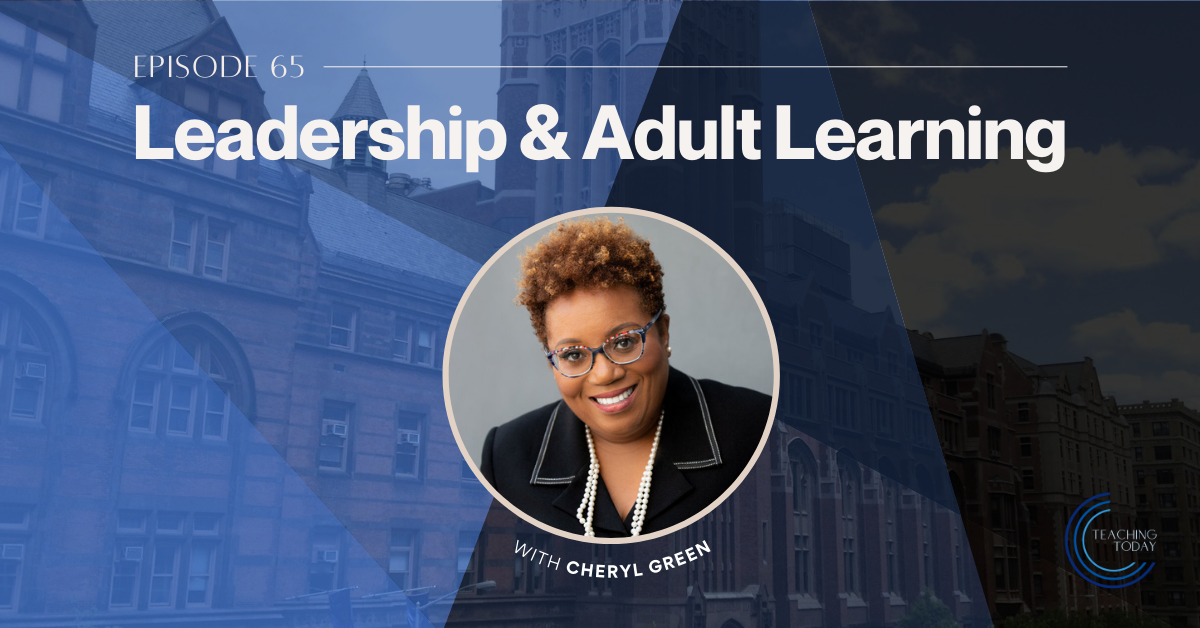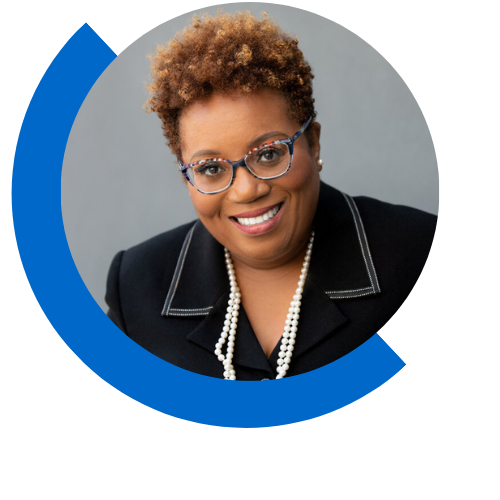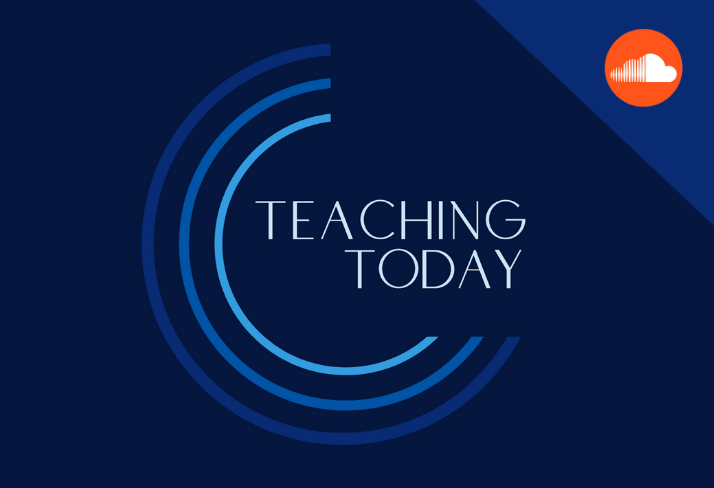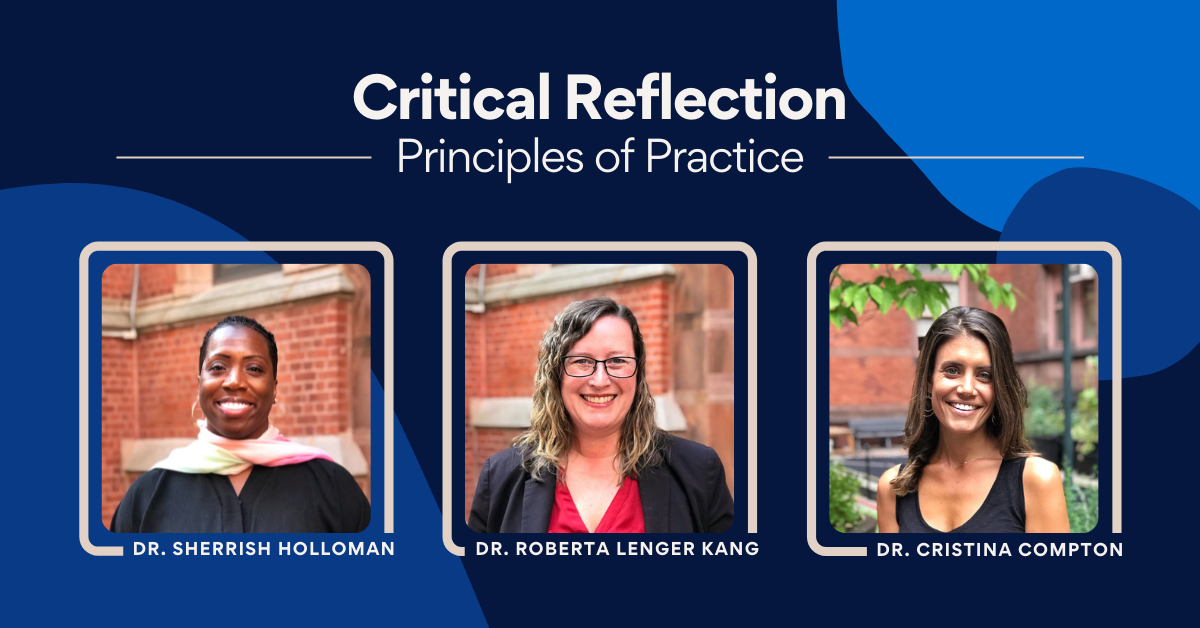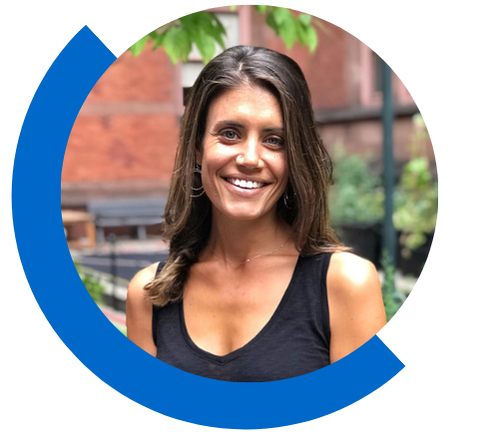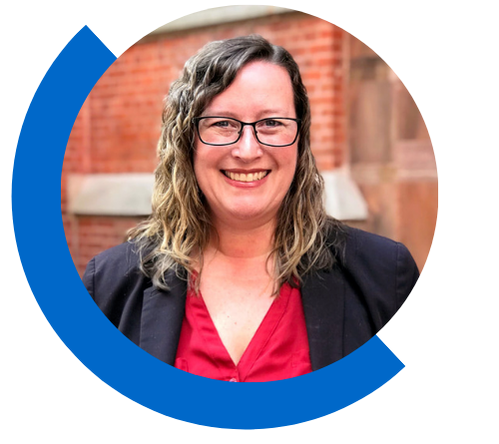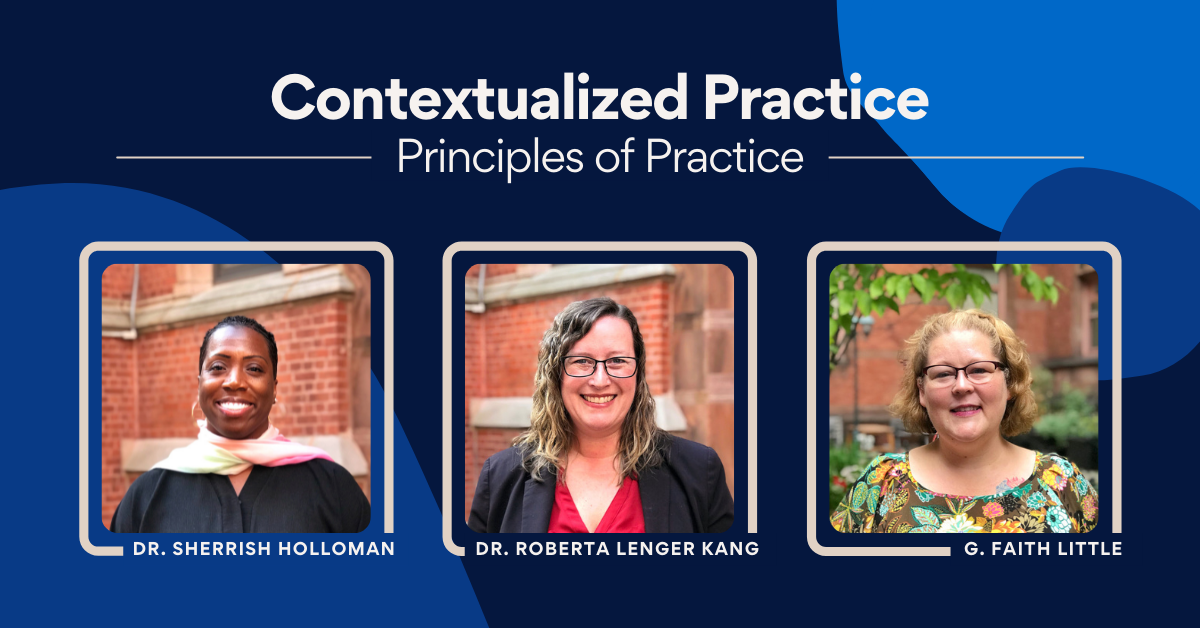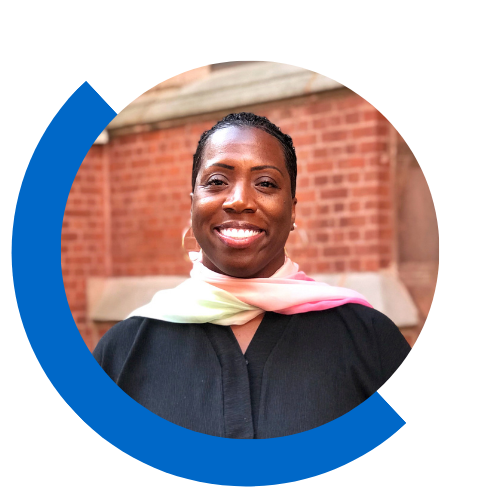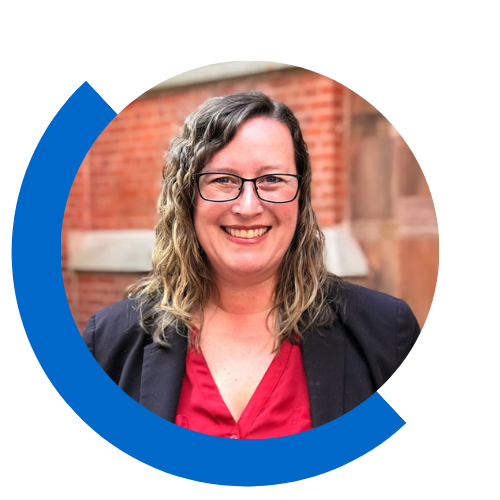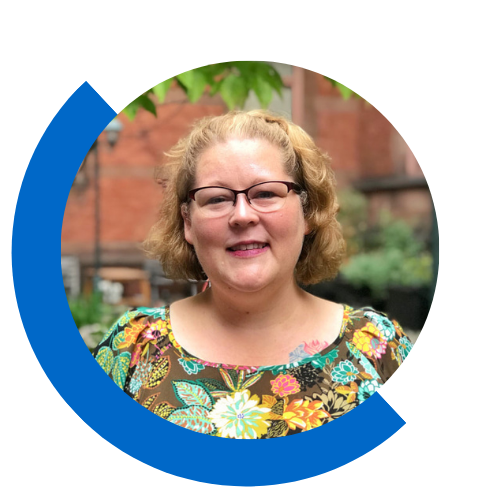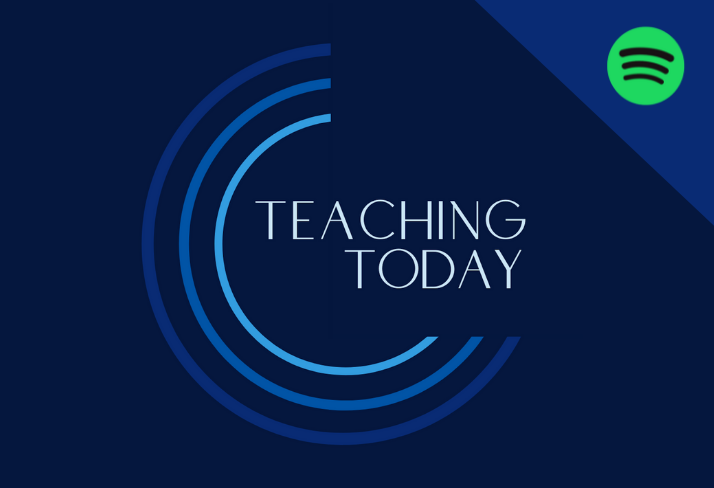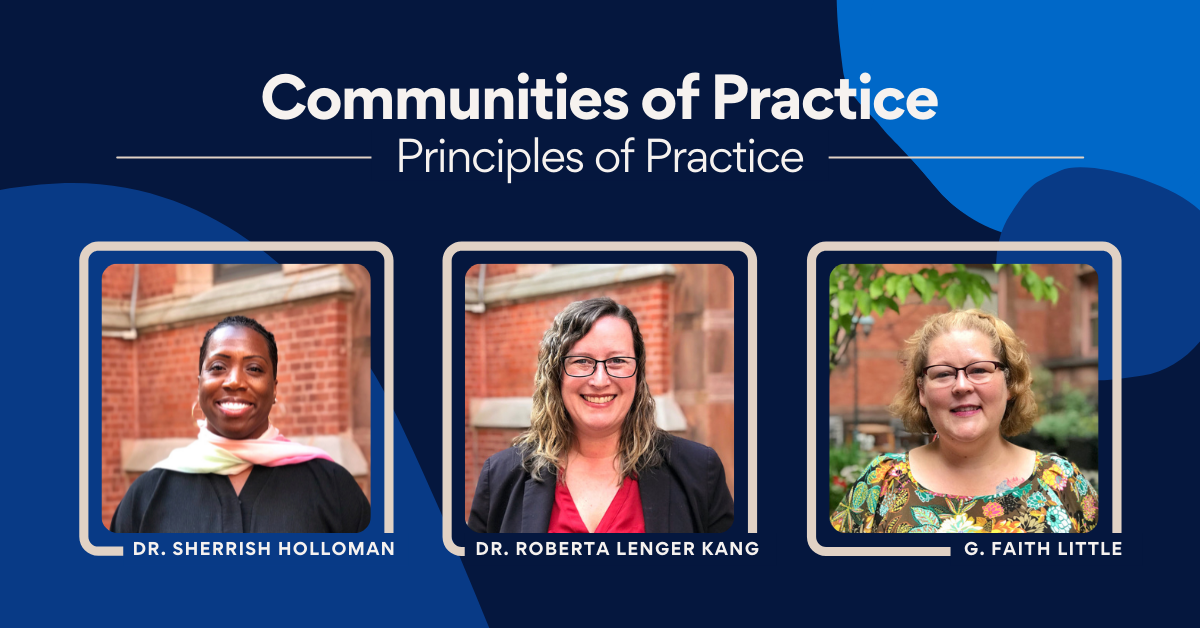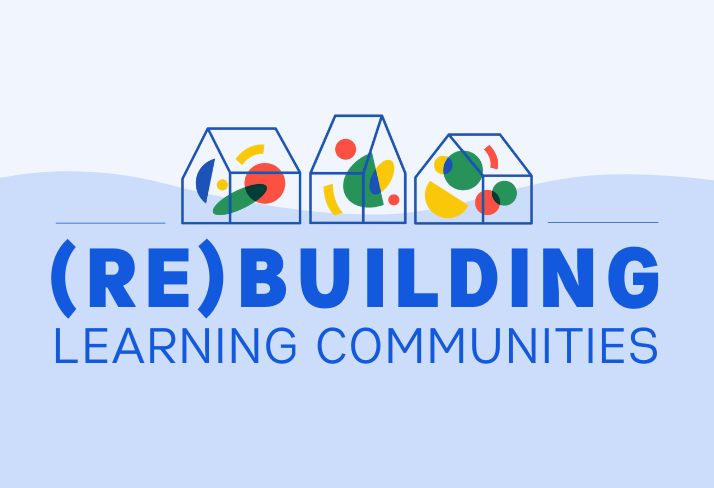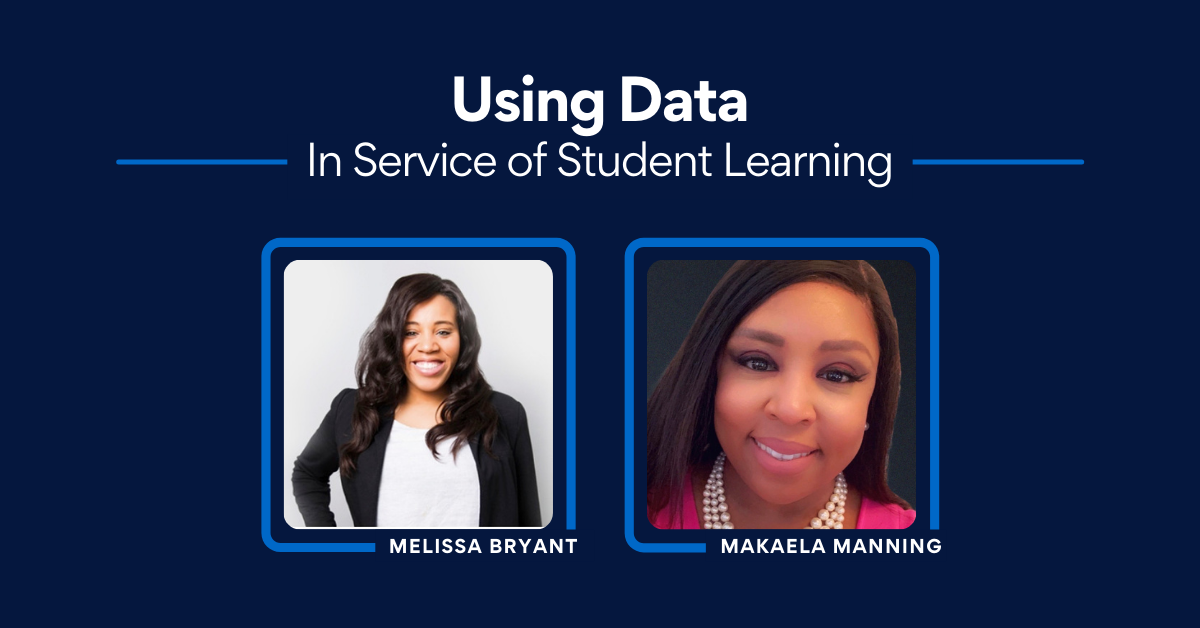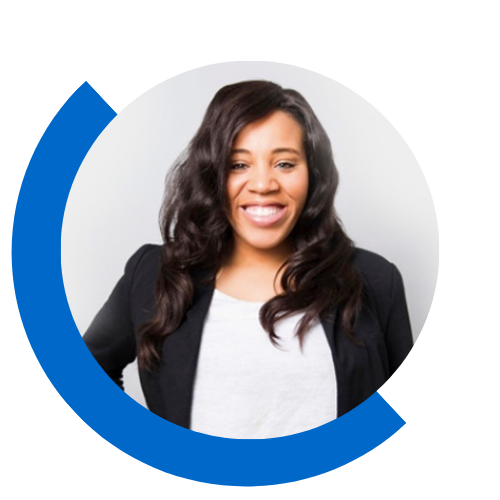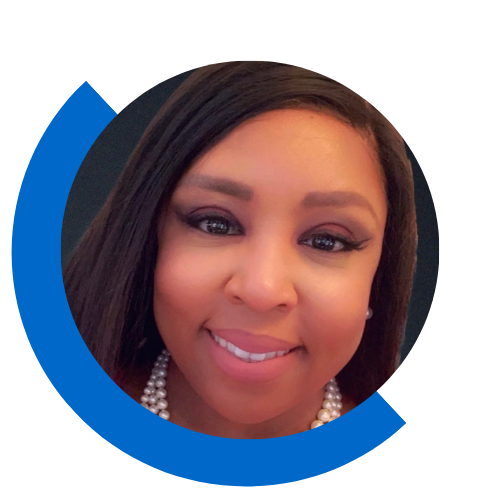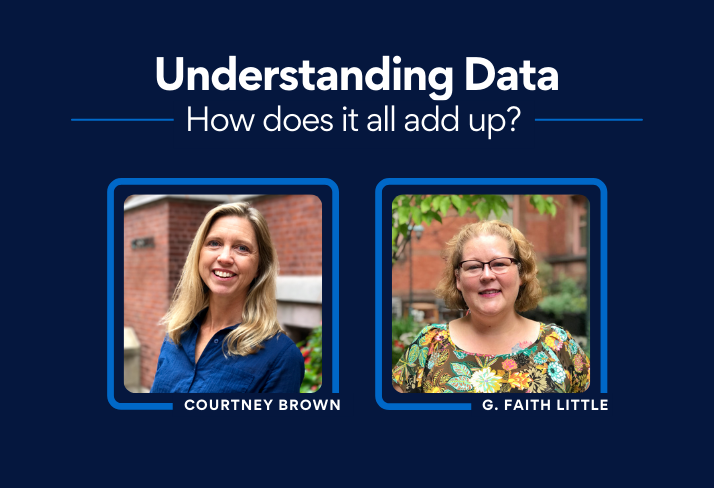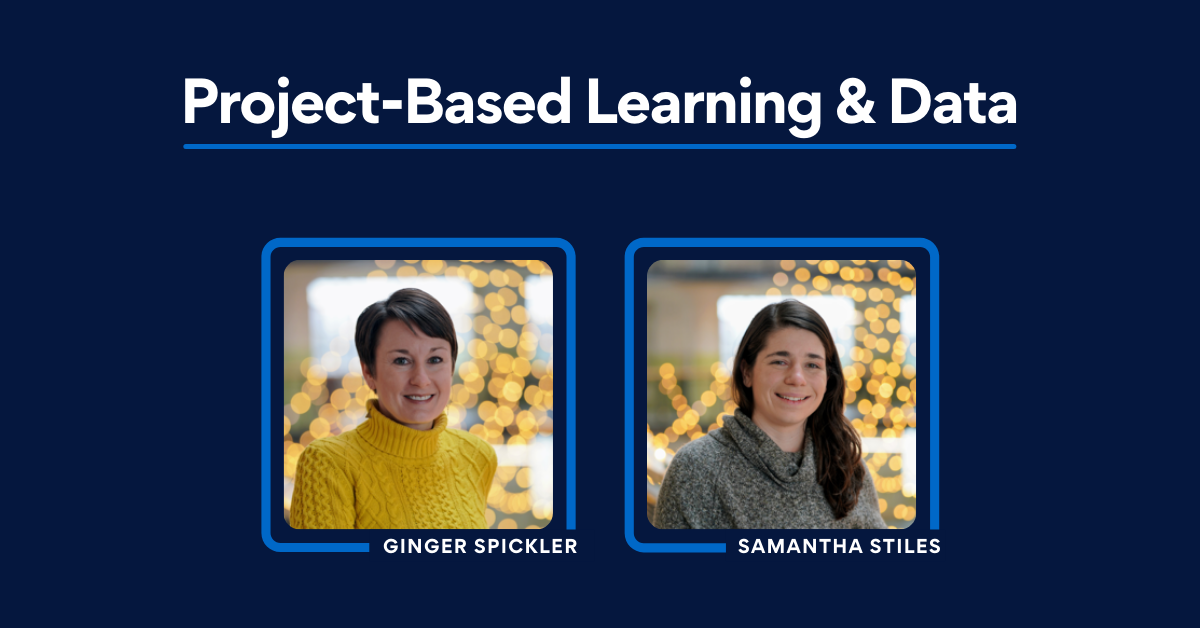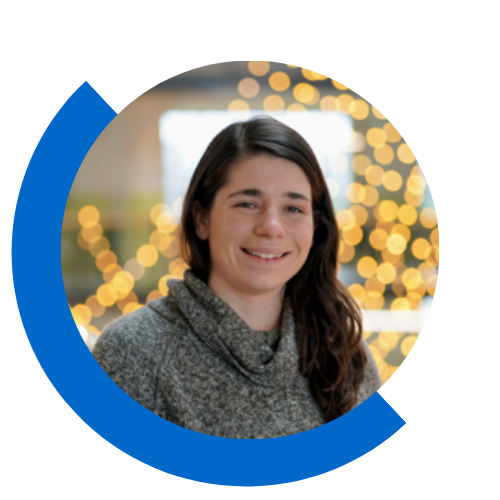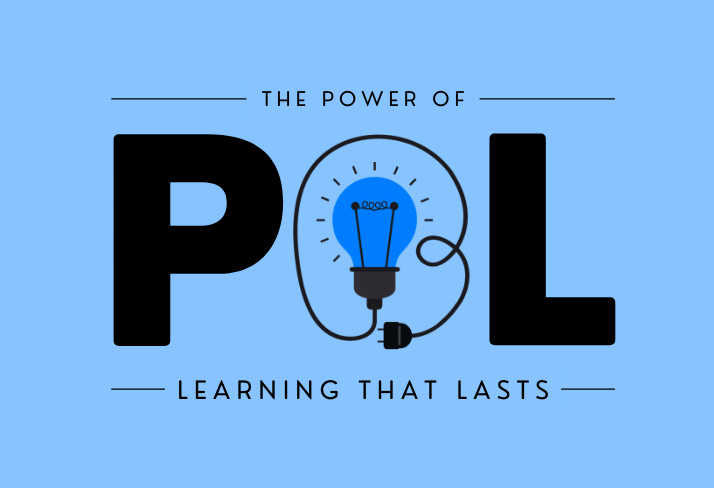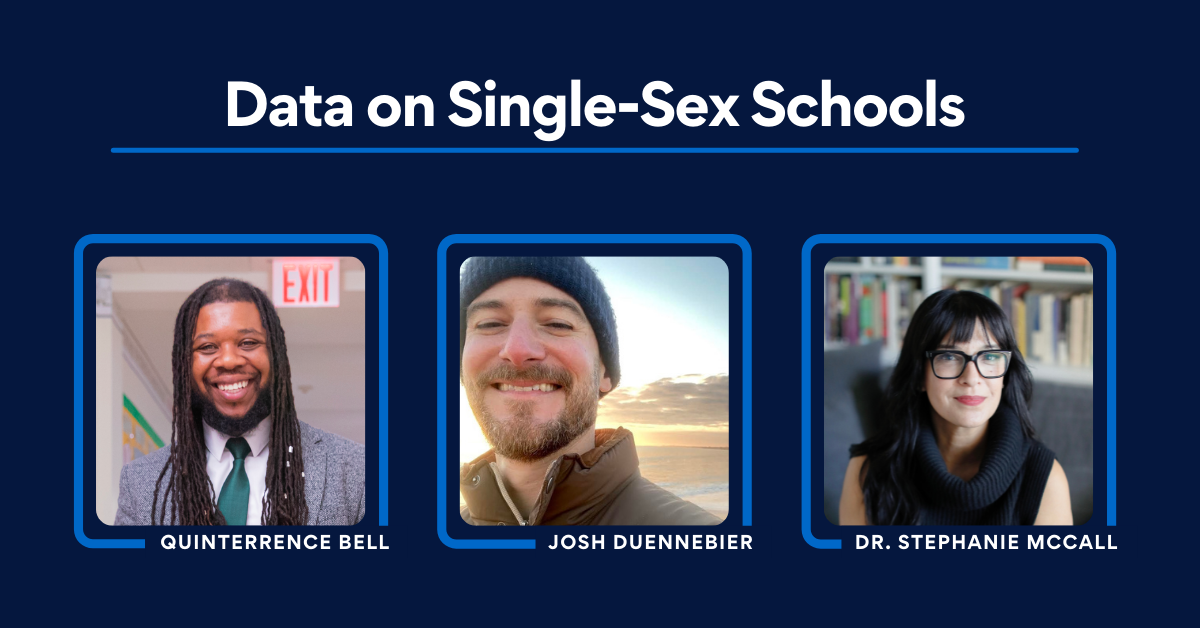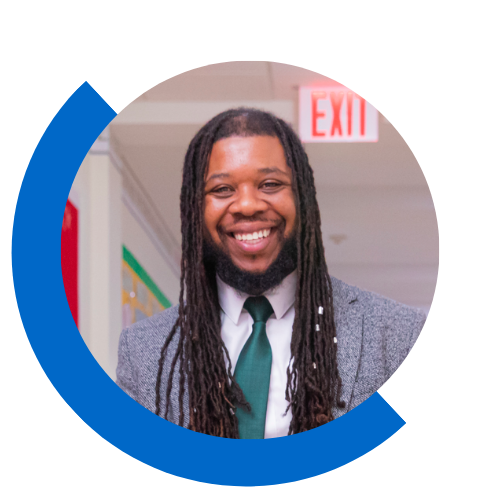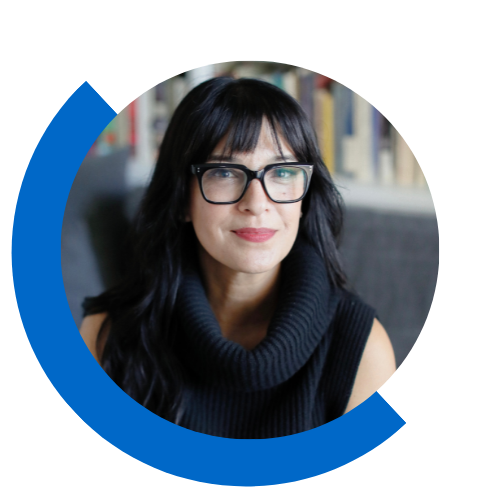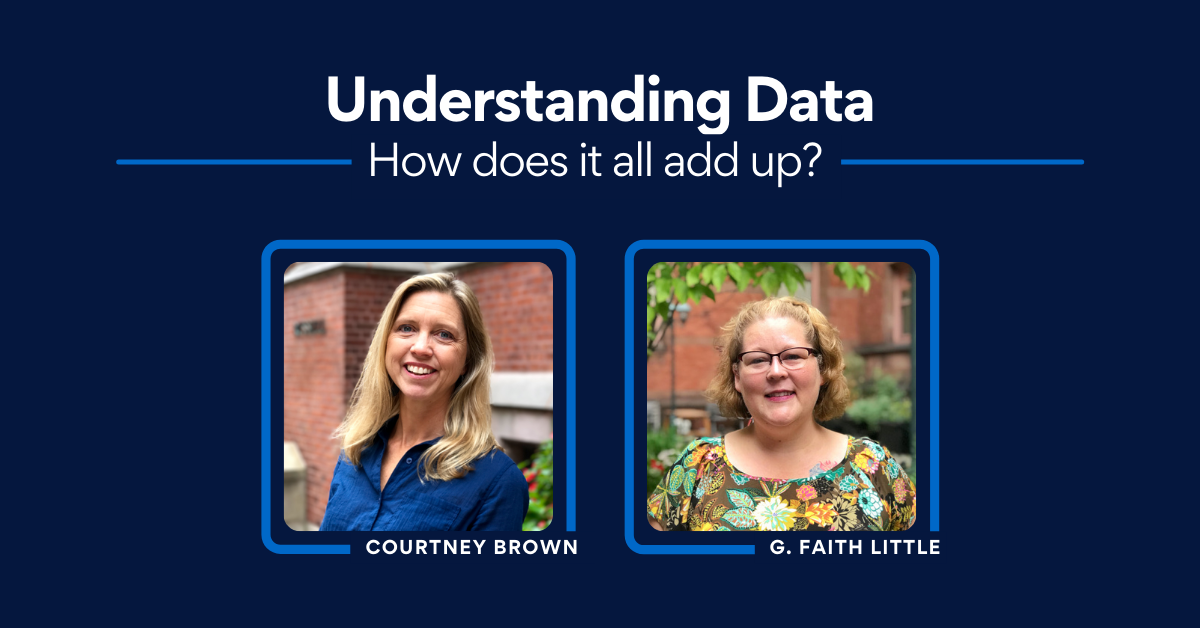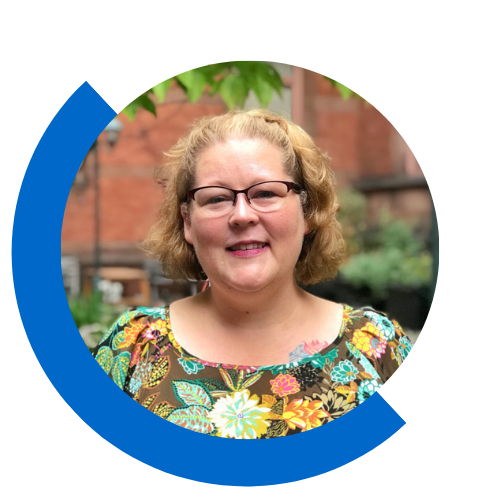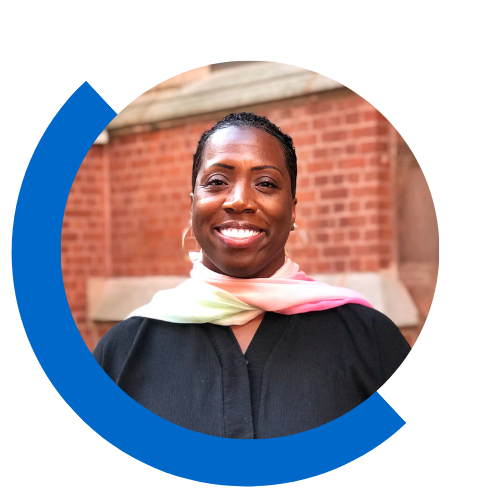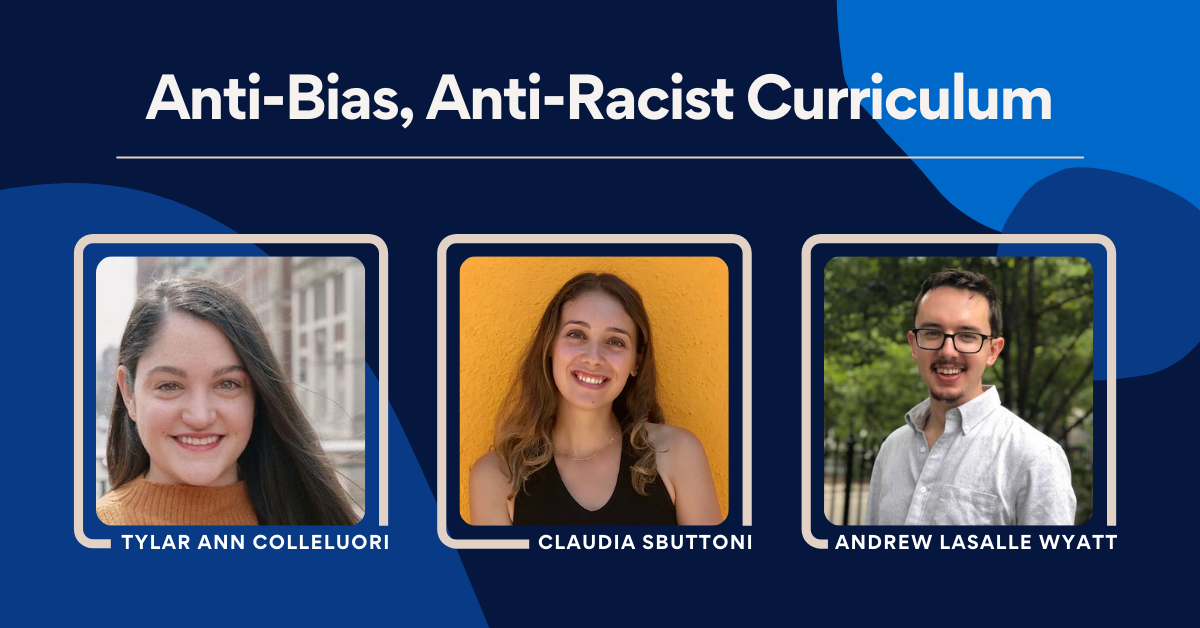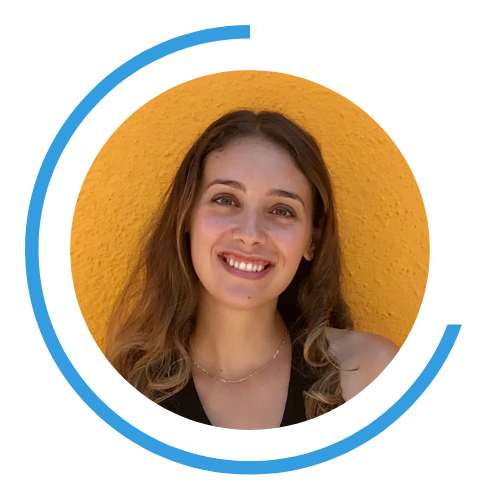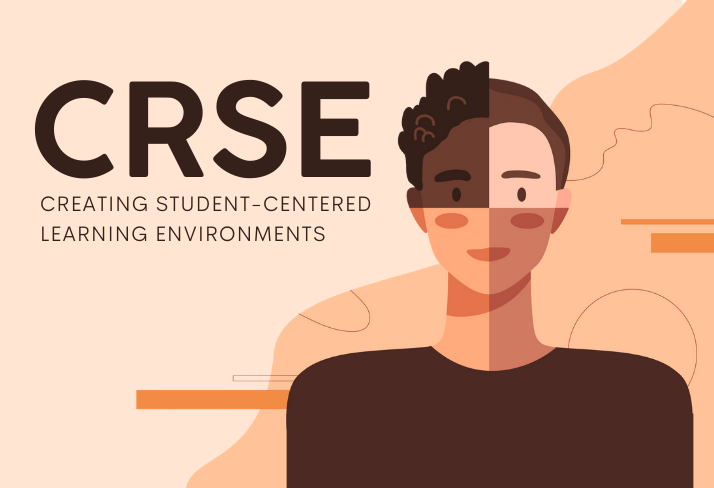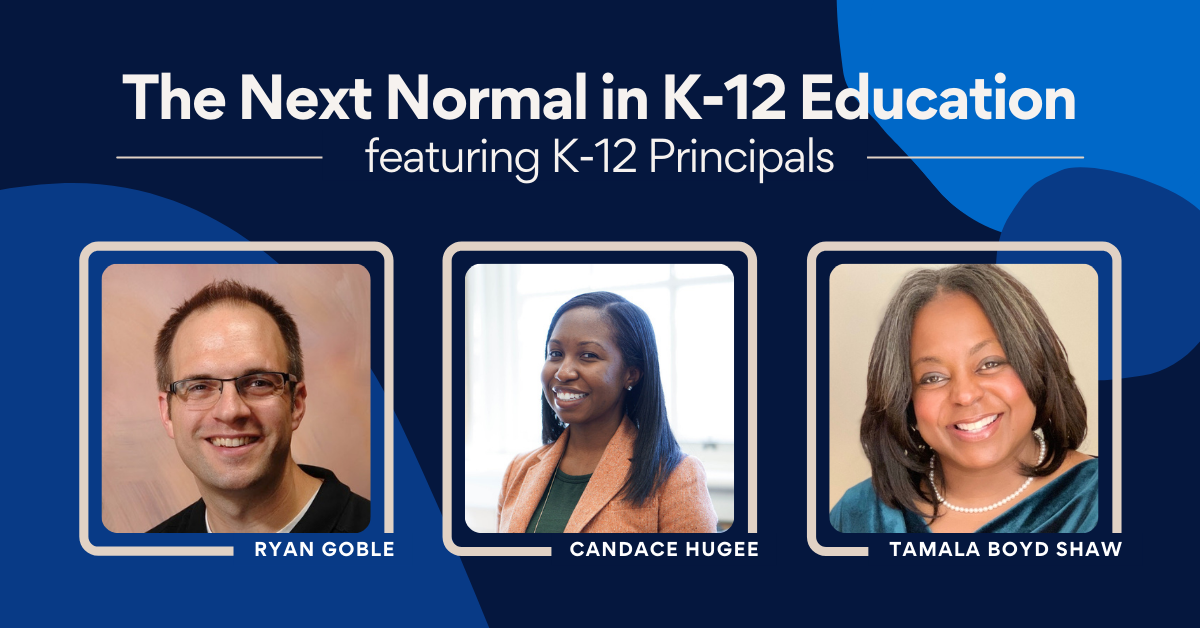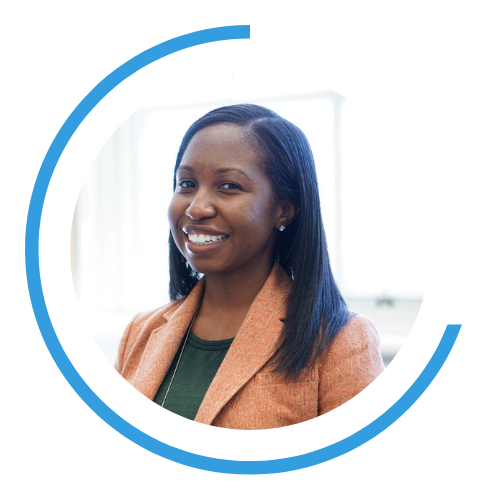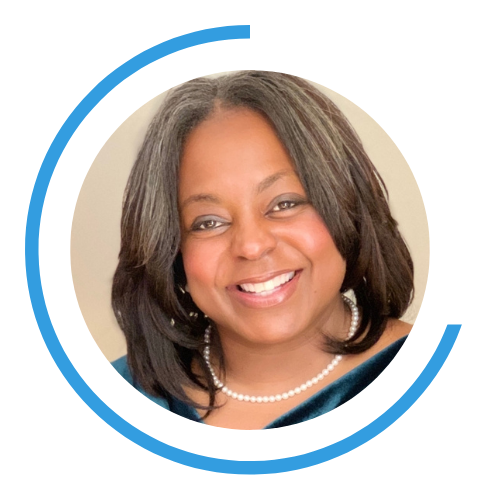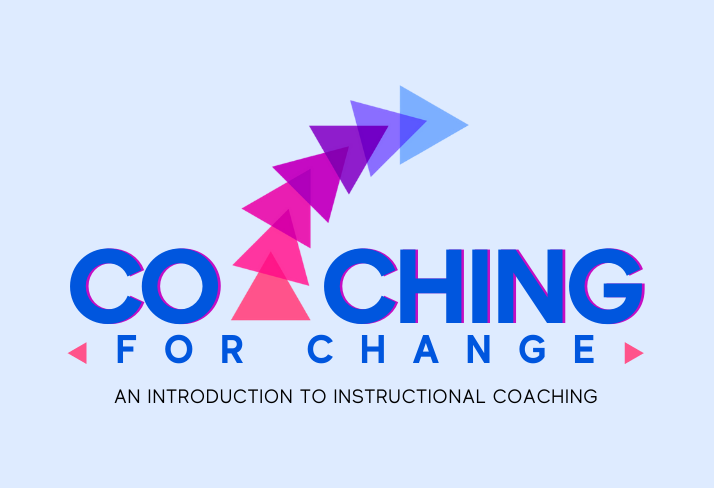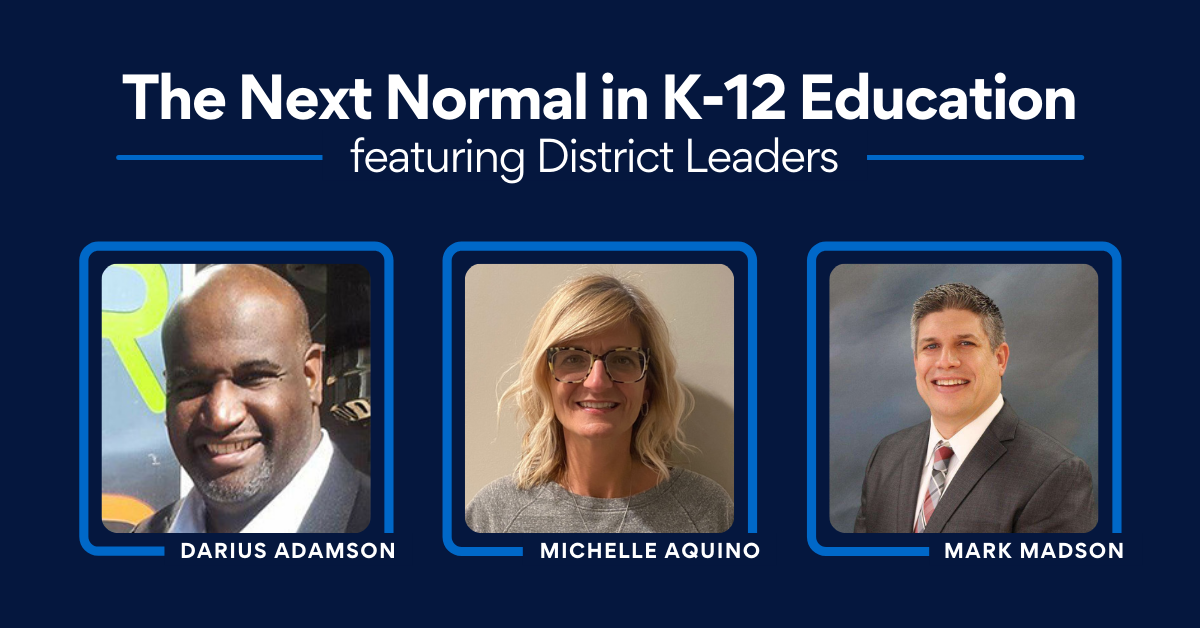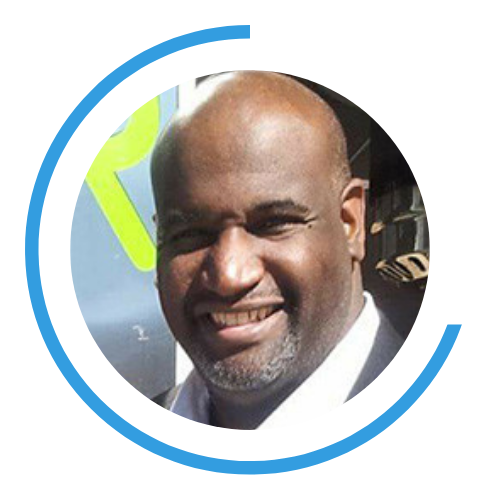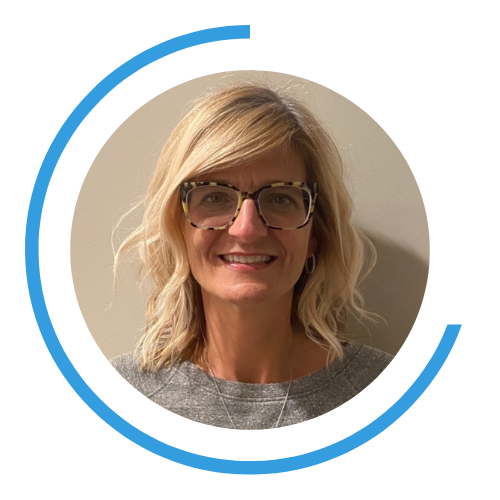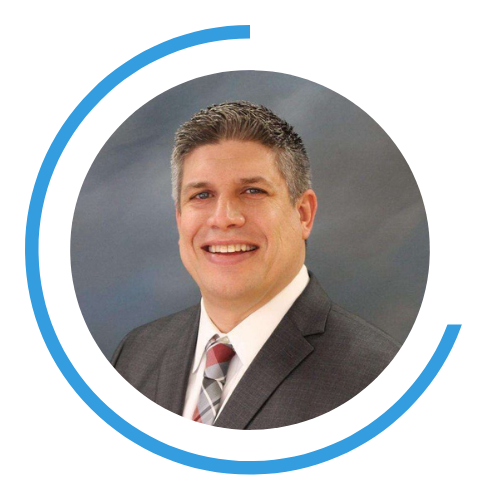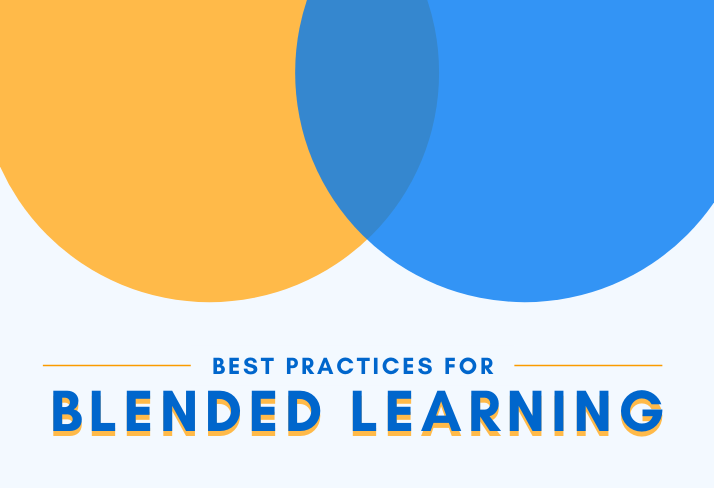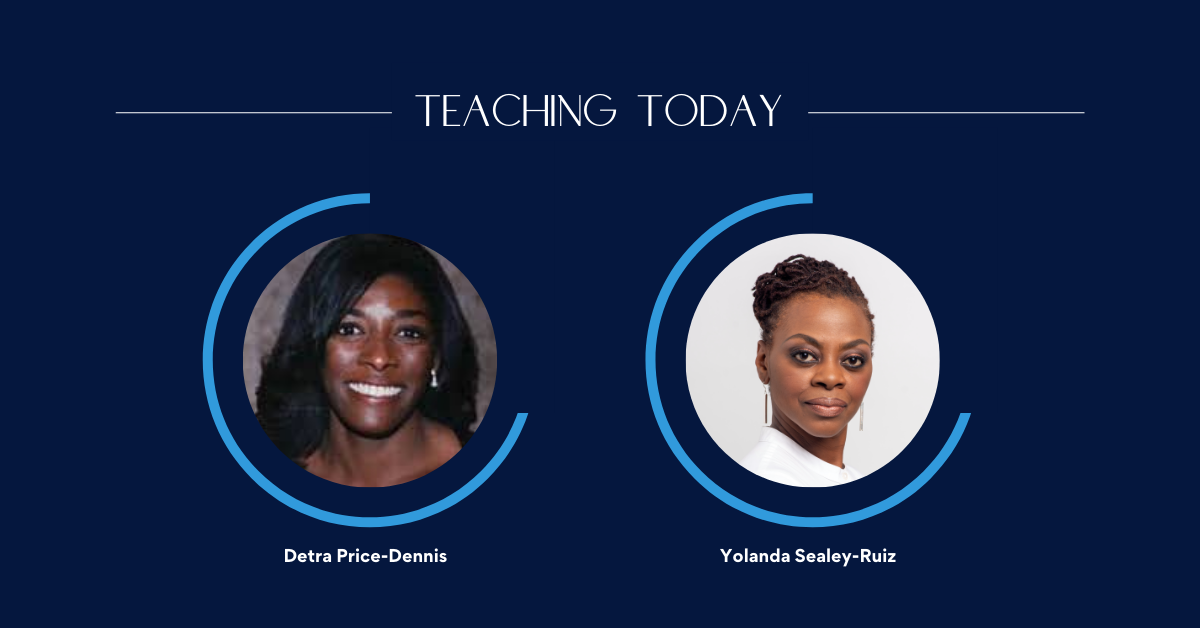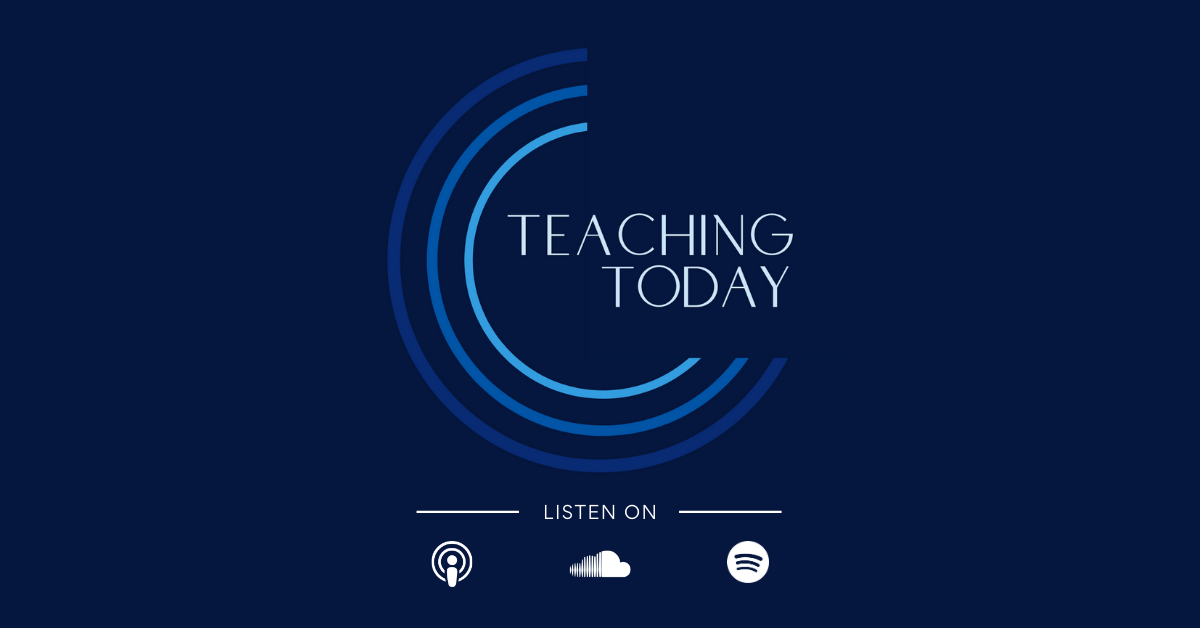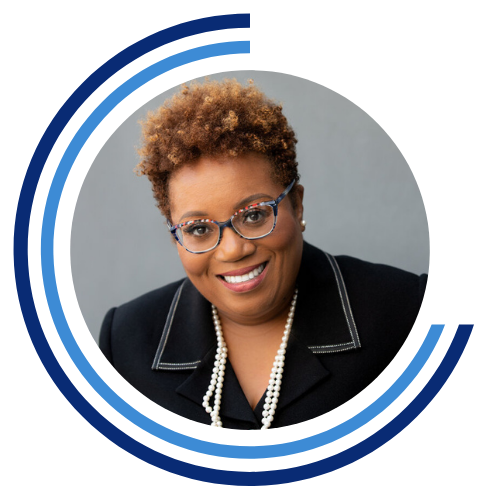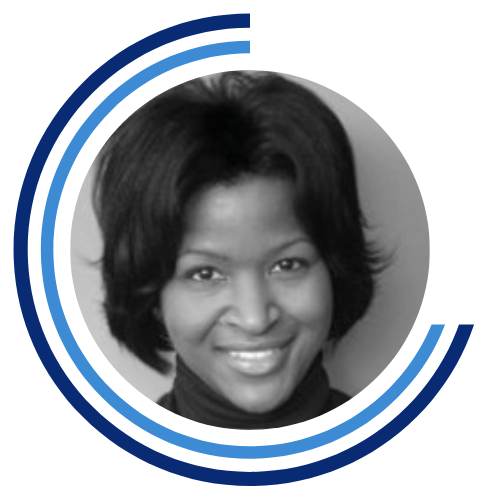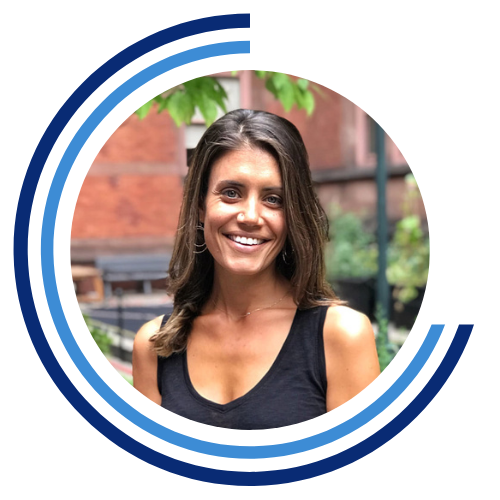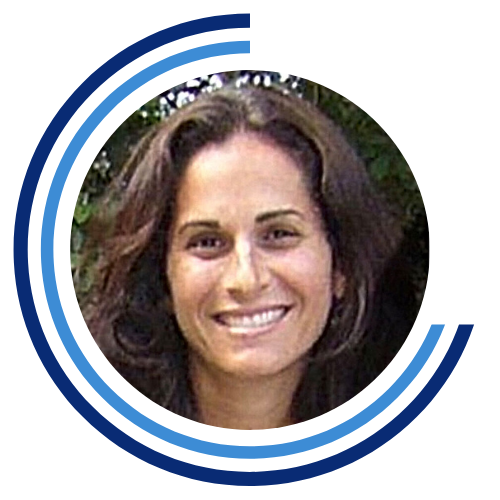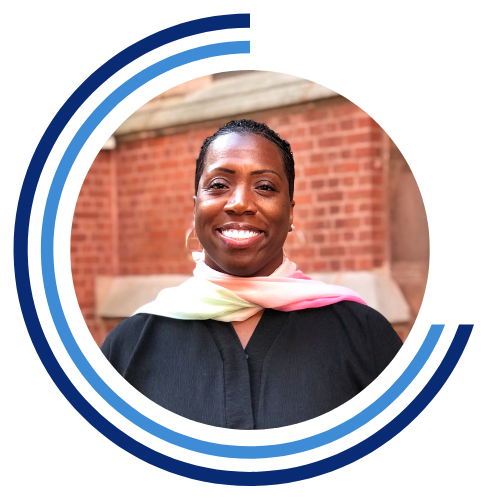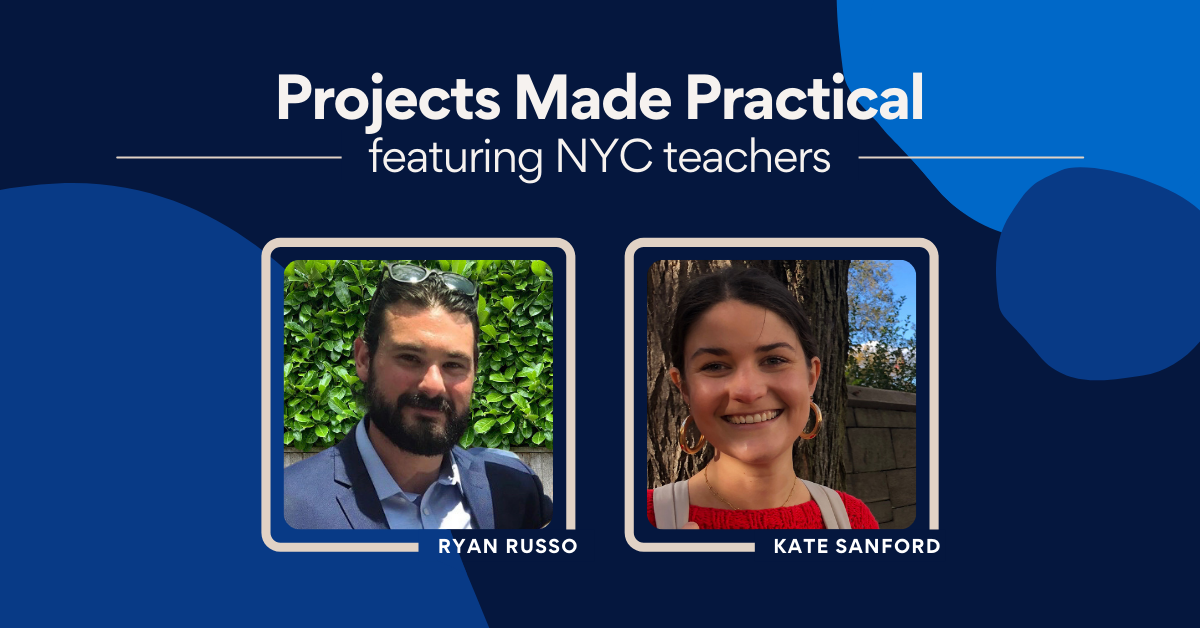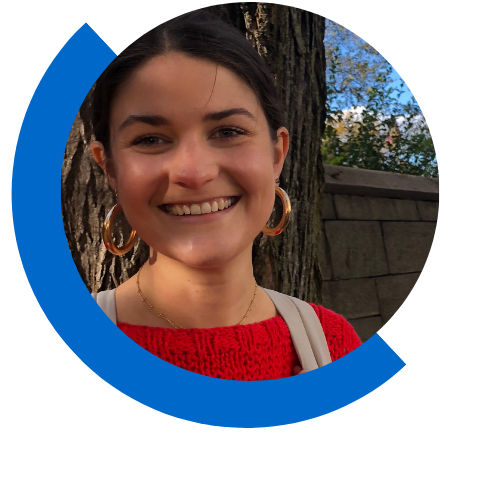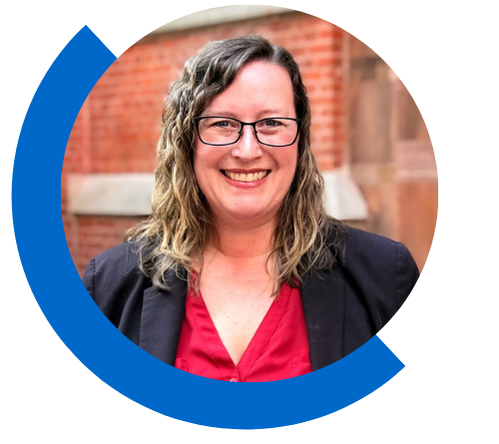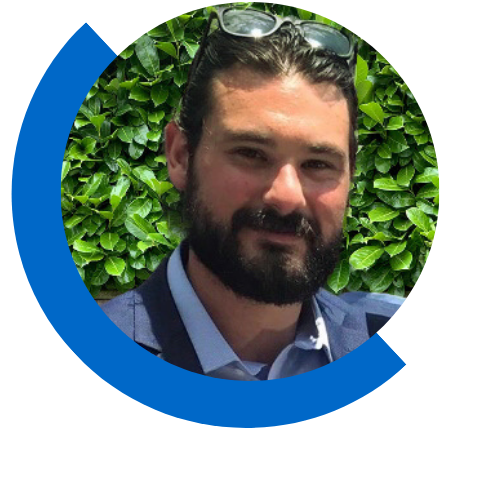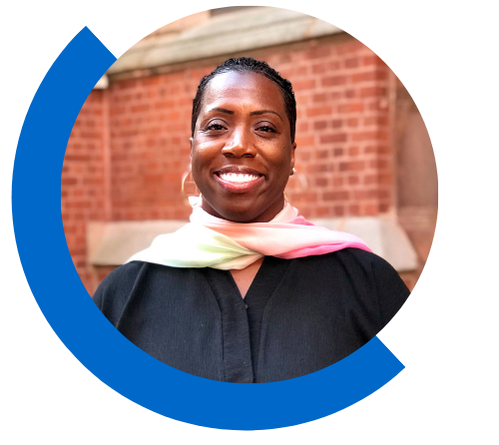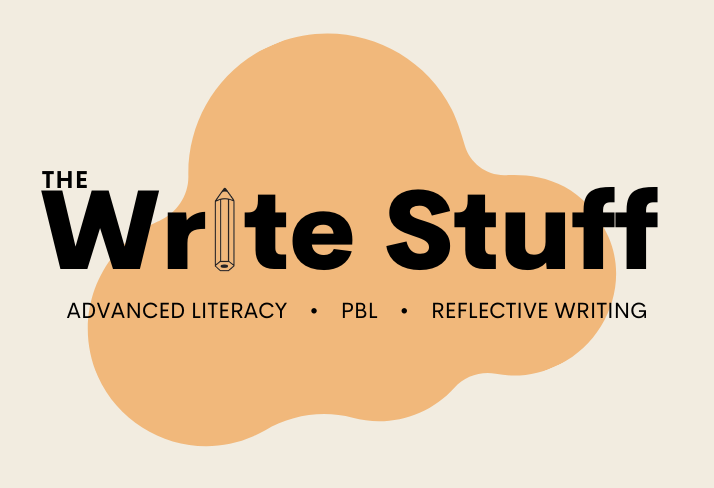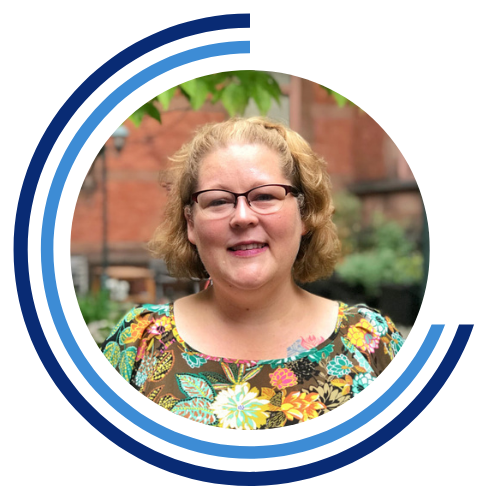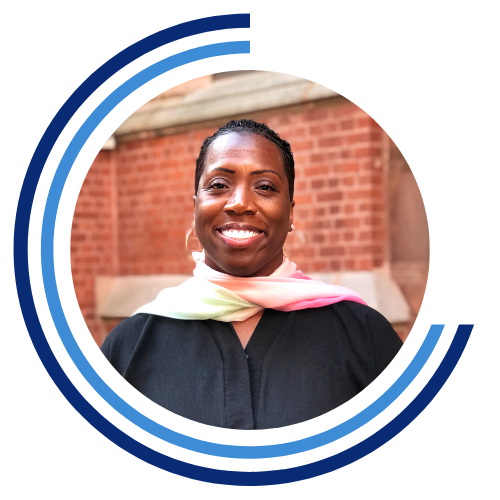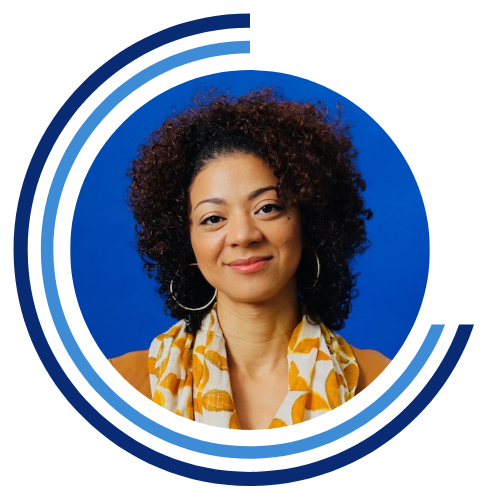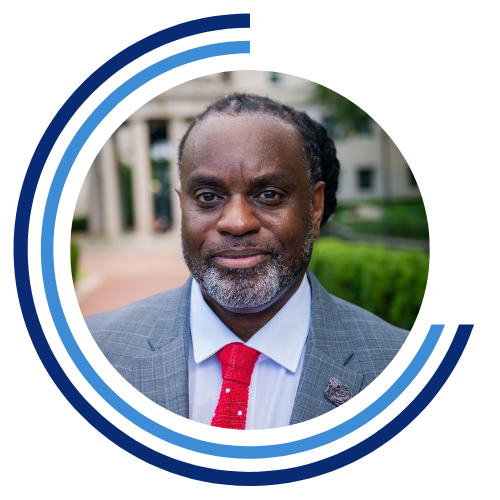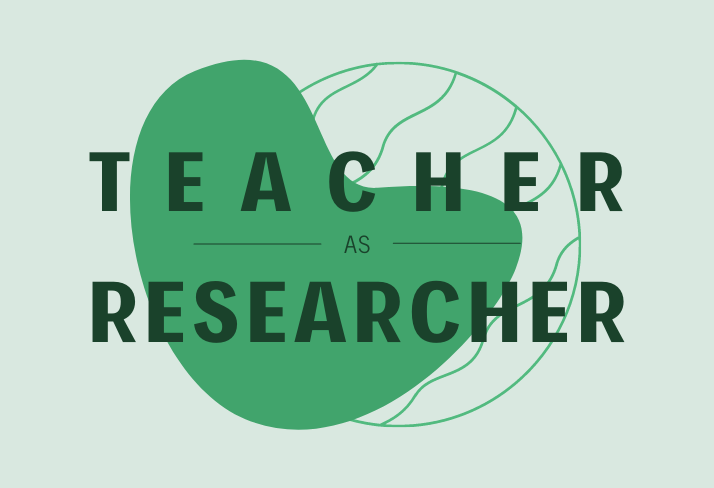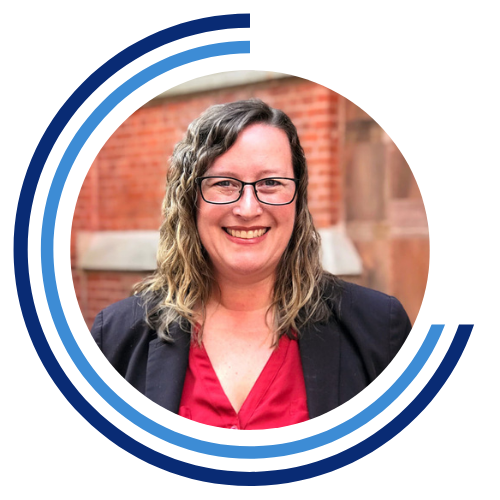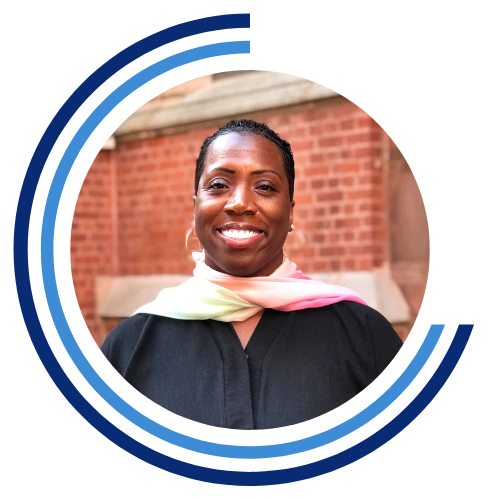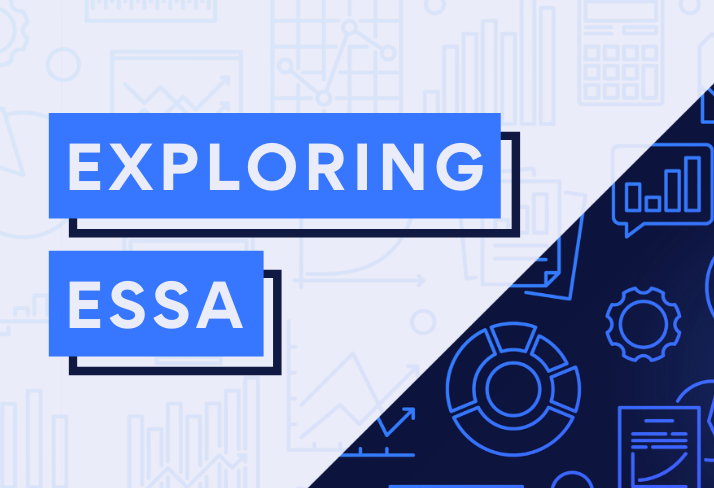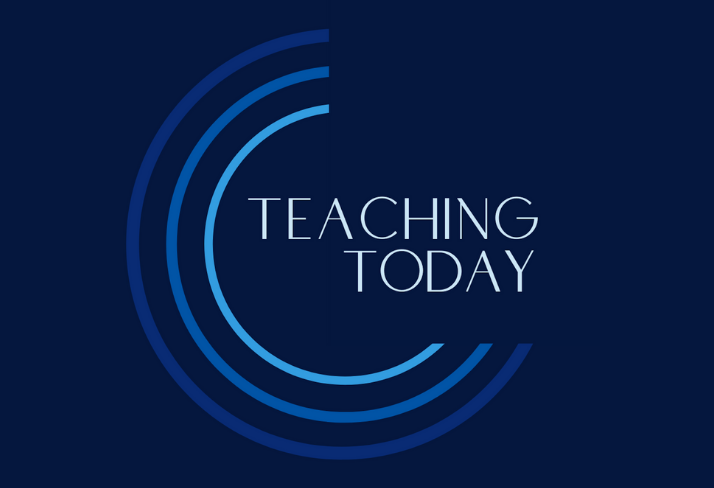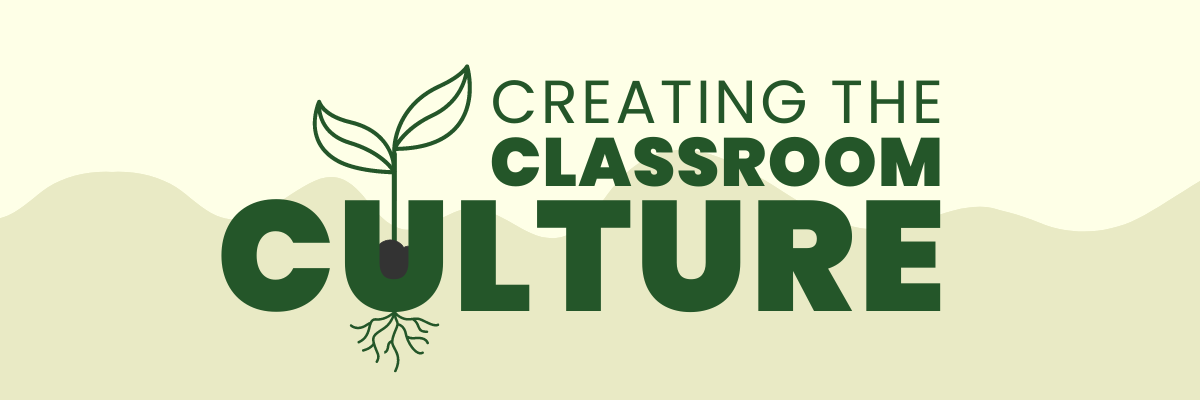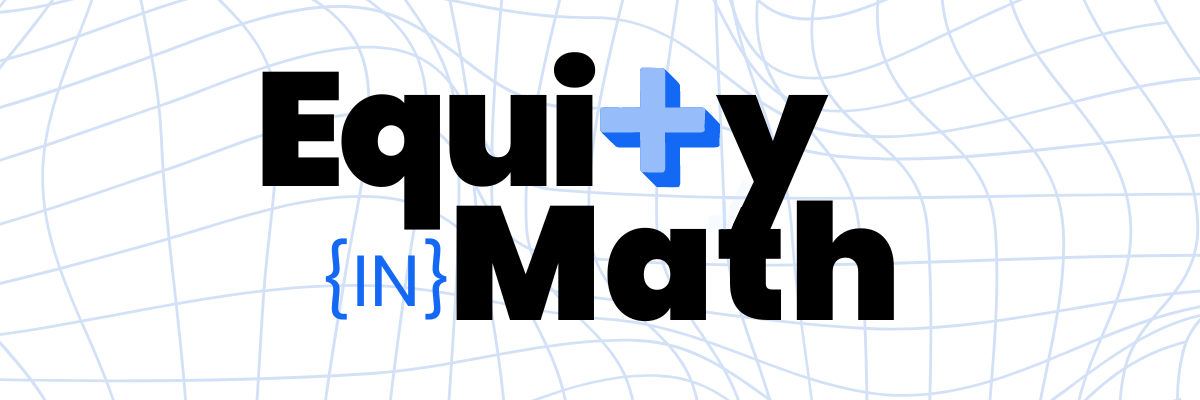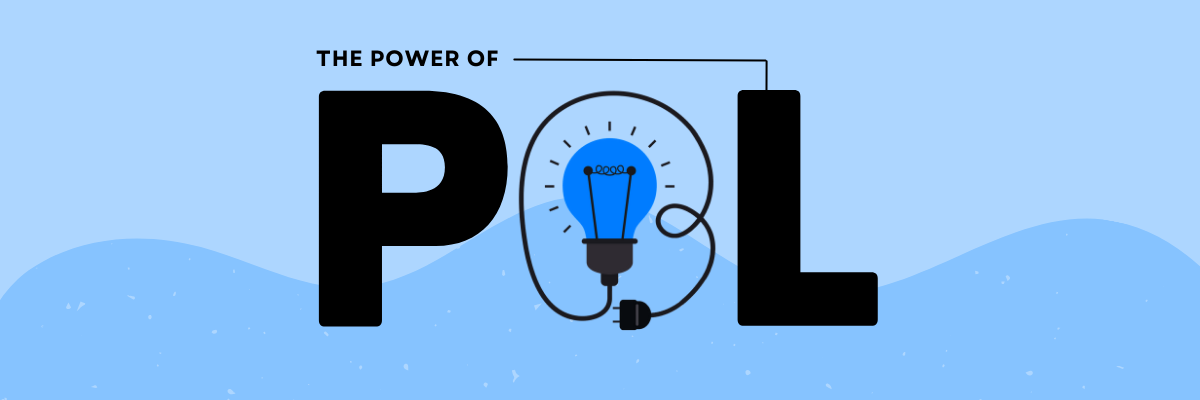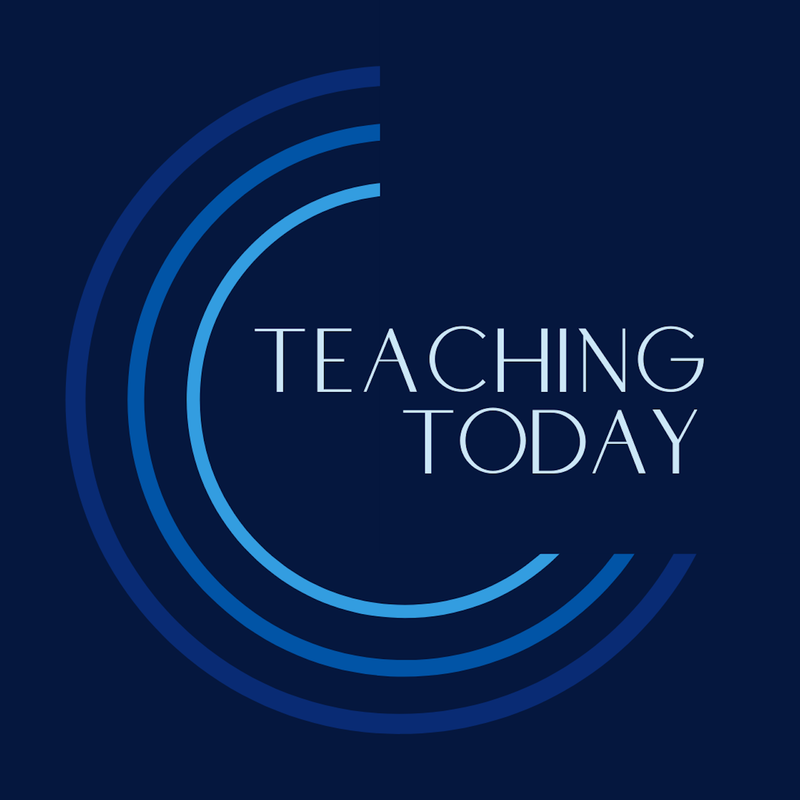|
A look at how schools are managing competing priorities while re-acclimating to in-person instruction.
Throughout the New Normal series on our Teaching Today podcast, we’ve been taking a look at the instructional interruptions and innovations that have surfaced over the past two years as a result of the pandemic. As schools continue to re-acclimate to in-person teaching and learning, our panel of school leaders returns to discuss the opportunities and challenges they’re witnessing in their communities.
Let’s “listen” in on the conversation between:
Roberta: It feels like we are coming full circle with our New Normal series. And now that school is back in session, I wonder, what does “normal” mean, and will it ever return? How are things with you since we last had you on?
Candace: Returning definitely came with a lot of anxiety which hasn’t actually gone away, but I think that every stakeholder involved in the life of a student saw the need to return to school, and the kids more so than anyone else. They have been here. I’m seeing attendance at 93% every day! We’ve seen the emotional journey as we make sure we satisfy the needs of everyone who needs so much attention but also make sure that we are working in tandem — always focusing on the academic needs and not using that as a crutch or a reason why we're not focusing on instruction. Ryan: Candace, it’s great to hear about what you're doing and the challenges there. I was a principal in a Benton Harbor area school, and I have recently left that role. Now I'm working at a Silicon Valley consultancy, and I’m working remotely out of Chicago. I'm in charge of professional learning opportunities, so I can certainly speak to what it's like not being a principal, but I can also talk about what I see going on in schools both as a parent and because I’m still working in schools as a collaborator.
Assessing the damage
Roberta: We’ve experienced that cycle of openings and closures along with logistical challenges, but now that we’re settling in, there is a renewed focus on instruction. What are some of the early experiences in terms of atrophy, or what some are referring to as a learning gap, that may have happened in the learning over the last couple of years?
Candace: I think staff members, students, and parents feel a renewed sense of life and appreciation. It has become a central focal point — the reintroduction into school. We’ve had logistical challenges like losing staff members who resigned, moved, or found remote jobs alongside the reality of vaccine mandates. Even with bountiful stimulus money, it doesn’t replace good people. Five years ago, we would have said this is ridiculous, but today we have to actually make meaning, create a path forward, and make goals come to fruition. So, it has been an interesting kind of tension for me personally, as a principal because, while I care deeply about my students I have to focus on these challenges — all of these different variables. Even when I can think of excuses to let up, I’m not going to give any. Every day is valuable, so you have to always keep a straight face and hold on to the mission and vision. Ryan: I think we saw the same thing in Benton Harbor. Staffing was the biggest challenge and it’s very hard to climb up the hierarchy of learning when you don’t have enough bodies. Even prior to COVID, we had situations when multiple teachers would be out, and our PE teacher would have 90 kids in the gym. In my home district here in the Chicago suburbs, we just had a parent teacher conference last night. The first thing you see when you walk in is like a job fair. It’s a huge 25,000 child district, and it’s like we’re going to speed interview. We had to cancel a couple of days of school because we didn’t have enough bus drivers. I was very proud that we were able to offer a kind of hybrid experience, because at the end of the day, kids had about half the time in school, and half is better than none. When I talk to the teachers here locally, they are much more concerned about the social-emotional issues with the little kids. For example, for the kid that missed kindergarten and then went into first grade and maybe didn't have preschool doesn't know how to do school yet. So this is a big deal, especially for the younger children because they just don't know how to function in this environment. They're used to pressing mute, not being in a physical classroom, engaging with humans. I wouldn't even say it's a learning loss. It’s more like you've been raised by a computer for a year, instead of people. Of course, I’m being facetious but how do we do group work in this landscape? I think we forget how intense that social learning is in those first three years, especially. Roberta: I want to build on that because I think that one of the things that we're really seeing across city schools is a focus on social-emotional learning, and I don't know that it's just at the elementary level. I think that we're really seeing it manifesting in pretty big ways in middle schools and high schools as well. Teachers are also experiencing challenges around their own social-emotional health as we're all kind of coming out of the pandemic and beginning to assess the damage both internally and externally. Ryan: It’s funny you mentioned this, because in local districts in the Chicago suburbs, the report was that teachers “stormed” a board meeting about work conditions. Now, maybe the report was a bit overcooked, but at the end of the day teaching really is a 24/7 job, even if you're phoning it in. There’s no such thing as an easy day of teaching, and then to juggle all the COVID protocols — then, to communicate all these things with the central office when there aren't robust systems in place to make that frictionless. I think that working conditions for educators in general are a concern for teachers and their mental health. Candace, you just alluded to that when you said you've got to have a game face, so your teachers can keep their seatbelt on. Sherrish: Yes. What's really happening is that it's different for everybody, so everyone is dealing with some form of a different kind of socialization, some emotionalism around this whole pandemic and returning to school. It looks different if you're in high school, it looks different if you’re in middle school, and from the perspective of a parent or a teacher. Whatever the case, it exists. We're all going through this.
Re-acclimating to the physical classroom
Roberta: One of the conversations I've been having is thinking about teachers who are new to the field within the last couple of years. The reality is, if your first- and second-year teacher are teaching in a primarily remote or in a hybrid situation, there are a lot of brand new things that you're experiencing that you have never had to do before. You’ve never had to pass out papers, figure out how to negotiate the bathroom pass — you’ve never really had to deal with interruptions in your lesson, because you could absolutely put your whole class on mute and finish talking. You can't do that in real life, and that's one of the challenges that a lot of educators are facing right now.
Ryan: I want to jump in and talk about class size. We saw that was one thing people appreciated during the pandemic — small class size. Now that we’re back in person, we have challenges like: in my daughter’s class, five kids just kind of vanished — we know one decided to be homeschooled — and that was enough for the school to cut one fifth grade teacher, so then all of the sudden the class size is even larger than before the pandemic. I’m also thinking about the hopes we have that people are getting vaccinated to scale, but what if that doesn’t happen? Are we going to see a dramatic uptick in COVID and then more disruptive shutdowns? What are you thinking, Candace? Candace: I can't even allow myself to think in that way. With what we’ve been through last year — we're open today, we're closed the next — to me, no matter what happens, just have a plan. I think your city has to have a plan to handle testing, so it might take a lot to close your city, if at all. I’m not really worried about it, because I can't get caught up in what happens. We have to be prepared for it, and have a mentality that we can handle it. With what we lived through, I have that mindset. What I’m focusing on is dealing with teachers that have been around and want to go back to some very traditional teaching, like handing out worksheets or thinking that students need to sit and listen to me teach, watch me write, especially now, when kids have not sat for a long time. Then we have the brand new Gen Z teachers who haven't done anything like this yet. So, I’m just going to say that when you’re a teacher you can’t really prioritize mental health by asking for mental health days in September, which is what I’m seeing here. It’s just a very different way of thinking. Ryan: This is an interesting statement, though. There’s this paradox. We all know the funny stories about kids gaming while they were on Zoom, but from a teacher’s point of view, they could do very linear teaching and we know great teaching is only linear in the sense that you’re building towards something — hopefully a cool assessment. But rarely does direct instruction get you through more than 10 solid minutes, so I think people got used to this sort of luxurious way of not having to think as hard about pedagogy.
Fostering connections
Roberta: I don't know how you're doing things, Candace, but I think a lot of schools are dealing with that hard question: to what extent do we go back to paper handouts and textbooks in the classroom, and to what extent do we continue in the more digital and virtual world? Schools I'm working with have worked very hard to make sure that they can have a one-to-one laptop ratio or Chromebooks within the school building so that kids can potentially have a device at home and also have a device at school. They have eliminated paper and handouts in favor of continuing on with some of those virtual practices.
This brings up the question around hybrid work. Today, we had a staff meeting with 15 people in person and five online. How do we do group work in this situation? It’s easy to fall back on the very traditional, “I’m going to talk for a while and you should sit quietly and answer some questions.” Working individually and independently on my laptop in class perpetuates that traditional model, even though you're working in technology which many people assume is very 21st century. Candace: Yes. Exactly. We started to discuss this at the end of last year. Our building is very traditional in the sense that it's old, so we literally have power outages every single day. I have generators that I bought from Amazon that we have in order to charge a smart board so it stays on when the power goes out. At this point, the kids aren't even phased. It’s more like, “Oh, the power’s out again.” We had a discussion at the start of the year about what to prioritize — how to get and keep students talking, especially as many get used to acclimating themselves in a classroom, simply being around one another. We had to talk about how much technology to keep using, trying to move from online to in person, and how to move from being in front of the smart board to moving around the classroom during class. We actually had our interim superintendent ask why attendance was so high, and I think it's because students weren’t able to have a genuine connection without us, fostering conversation and connecting with each student. This led to kids really wanting to come to school. Ryan: That's interesting because if you've read Matthew Lieberman, a professor of psychology at UCLA, and the Ted talk is out there too, he basically proposes that Maslow's hierarchy of needs — food, shelter, all the way to your self-actualization is incorrect. He says, the first you know when a baby is born, the first thing they do, why they cry, is because they're trying to make a social connection because they're not going to get food and shelter unless they can make that connection with mom or dad. Any school that can capitalize on that basic psychology of humans first is going to have spectacular outcomes like you’re having. It also brings in questions of digital technology, and what happens when we have incredibly shallow meaningless connections. It’s a skill, because you may be connected, but you have to determine if it’s a meaningful connection. Those are big questions as a society we’re addressing now. It’s exciting to hear that getting off the devices was making them tune into each other as human beings and engaging in different ways. At the end of the day, there's real power in saying we're going to do more with less. We’re going to focus on what matters, which is people and relationships — making curricula social is a very powerful thing. This is why we knew intuitively, and we've now found through research, if you have kids going out and doing stuff in the world they'll engage differently than how they engage with just the dreaded worksheets all the time.
Managing observations
Roberta: One of the things that happens around this time of year for many schools is the influx of observation. We’ve established our classrooms, our student programming, getting everyone in their classes and getting their schedules correct, and now is the time for a teacher evaluation. But we're still in a time of a lot of stress and pressure, and it feels like we're still changing. We’ve got teacher shortage issues, and maybe don't have enough bodies in the building — how are you managing that as a school leader in terms of getting back into an observation cycle? What are some of the things that you're concerned about?
Candace: Well, even with the mandate for observations, we never viewed them from a punitive standpoint, so it doesn't feel as painful. It's really about feedback and a conversation. I’ve done a first round that was focused on a non-invasive process, especially for the teachers who needed an introduction to the process. We want our teachers to invite us to two lessons they think will go well, so they feel more comfortable from the start. We look at the Danielson rubric as a tool instead of something punitive, and we invite people to refresh the content for themselves in hopes that it can actually improve the quality instruction for students. It’s about how you show up for kids. Ryan: In Michigan, when we had the first pandemic spring, it was like, “Yeah evaluations: don't worry about it,” and then it went immediately back to normal. We found ways to make it less painful. Like Candace mentioned, teachers invite us in, so it’s less stressful for them — we’ll do anything we can do to mitigate the anxiety this causes because, no matter how you frame it, teachers are concerned because it's their life, their livelihood. Roberta: Yes, and there's only so much that a principal has control over in this situation. The evaluation criteria is actually set by the state, in terms of what percentage of their rating is based on observations and what percentage is based on student performance on state tests. Candace: Yeah, I think because of the pandemic, many educators were hoping that the powers that be will actually see that there should be a different way we evaluate students — in a more holistic way. Roberta: Thinking of operations and feedback, there is an art to actionable feedback, an essential intervention that helps cultivate a culture of shared values, but teachers and leaders often struggle to find the balance between positive, critical, and sometimes destructive feedback.
Promising pandemic practices
Sherrish: Yes, that conversation about actionable feedback is so valuable. We’ve had a lot of realizations today during our conversation, and I think many of us had ideas about what it would be like to return to school, and some of those things turned out to be true and some were not so true.
What is something that you're seeing this year, possibly as a result of the pandemic, that is exciting you for the future of education? Ryan: One of the most incredible things for me was witnessing elementary teachers who didn’t find technology to be their jam. You're supposed to be tactile and you're supposed to have scissors and construction paper. It's not about clicking, but within a month, my teachers — although they were not a very tech savvy bunch — were Google Suite pros and it was very exciting to see that kind of growth around technology happen at a quantum pace. We know that some people are saying you can use this or that software for all of your courses — my question is where are there good ways to use Ed Tech, where are there ways to rethink the classroom schedule, ways we can start doing more dynamic assessments? It’s more like everybody wanted to return back to normal so bad, right, it’s like, let’s go back to the way it was, and I think there is still an opening here to rethink Ed Tech. We’ve got a long way to go, but it might open up more possibilities. Roberta: I hear the concern that you're implying Ryan, which is yes, we want to go back to normal, but not back to the 70s, not back to the 80s in terms of pedagogy in the classroom, and we need to be thinking — how do we take the best of what we learned and the skills that we learned, and really continue to refine them how and work through, “How do you teach today for tomorrow?” Ryan: Yes, and the other interesting insight I have to add is that I've been working with a lot of companies in Silicon Valley, so whether they’re tech firms or firms working on their tech part of the business, the amount of thought and creativity that goes into things we take for granted is just as impressive as you would think. We don't see that kind of capital, both intellectual and monetary, being directed into Ed Tech. Candace: I agree. That said, as a leader trying to figure out how to do that within the box of our constraints, it is a challenge. This could have been a time to reconstruct school schedules, and not because we need to reduce class, but because this could be a different way for students to receive instruction that could have met their needs. There were so many different ways to construct things to meet all kinds of needs, and it felt kind of like we threw everybody back in and literally crossed our fingers and hoped for the best. I am hopeful that somehow, someone does see some innovation, and through the conversation among teachers, they can see the power and kind of the work that they do in classrooms. There are sparks. People are collaborating and pushing. I think when teachers got over their fear of technology, they could move forward and now they can continue to push into new ways of working. Ryan: That’s the central thing — can we put some of the good things we learned in the pandemic in a bottle and start spreading them out in other ways? We know school systems haven't changed in 150 years, really. Now we have a lot of proof of concept that people can do stuff they thought they could never do. You can always use this whole pandemic time as a case study. We published two books during the pandemic, Benton Harbor with CPET. Nobody prior to the pandemic would have thought about doing that. Roberta: Teacher shortages, learning losses, social stressors, anxieties about returning to in person school — it has been a bit of a bumpy ride, but our school leaders see the possibilities of what's to come with hardcore dedication to their team and a deep commitment to their students who are setting a clear agenda for forward momentum, no matter what. Ryan: [silence] Roberta: Ryan, you’re on mute. Ryan: That is the funniest post-pandemic thing — like everybody's been on Zoom for almost two years, and at least once a week, “You're on mute.” [Laughter] Roberta: And then that pause of looking for it — where is it again? It's in the same place as last time, on every call. [Laughter]
Your voice matters! Send us your education questions, concerns, and promising practices and we'll address them. Subscribe to Teaching Today and chat with us on social media, at @tccpet.
In this episode
Discussions are an important component of 21st century learning in all disciplines; they help students process and communicate information, and help teachers better understand which concepts students are connecting with. 21st century learning specialist G. Faith Little joins us this week to unpack the benefits of classroom discussions, and how they can be a simple, authentic way to assess student learning.
Final thoughts
Imagine you’re a teacher who wants to begin or refine the use of discussion in your classroom — what’s the smallest thing you can do to make the biggest difference?
TAGS: ASSESSMENT, TEACHING TODAY
In this episode
There is a natural — and often overlooked — link between leadership development and adult learning. Effective leaders recognize that adults are practical, hands-on learners who come equipped with prior knowledge and many years of experience — and adjust their leadership and professional development accordingly. This week, The Aspen Institute's Cheryl Green returns for a conversation around how leaders can better connect with the adult learners in their school communities.
Final thoughts
TAGS: LEADERSHIP, TEACHING TODAY
In this episode
In part three of our series exploring our core principles, we're looking at critical reflection — a crucial practice that encourages metacognition and self-awareness, and results in action that uses past successes and missteps to transform professional practice.
Hear from our K-12 coaching leaders
In this episode
In part two of our series exploring our core coaching principles, we're looking at contextualized practice — a way of working that allows us to design each project to the culture, context, and concrete goals of unique individuals and communities.
Hear from our K-12 coaching leaders
In this episode
We're kicking off a six-part series exploring our core principles — communities of practice, contextualized practice, critical reflection, cultivating strengths, culturally relevant and sustaining pedagogy, and cycles of inquiry — which inform, define, and shape our K-12 coaching practices. In this first episode of the series, we unpack communities of practice — a collaborative approach to discourse and decision-making that cultivates relationships, honors individual perspectives, and encourages working together toward a common goal.
Hear from our K-12 coaching leaders
In this episode
Data provides a blueprint for what our students know, what our students need, and what our students bring to the classroom. Data allows teachers to provide instruction that ensures their students are learning necessary skills, and it allows school leaders to better understand and support the teachers in their community. How can we support educators at all levels in understanding and applying data in ways that enhance student success?
Final thoughts
What is one thing we learned about data collection during the pandemic that should continue into the future?
In this episode
The word “data” can be a trigger for many educators. However, data that tracks student engagement and academic progress gives us a picture of what’s happening, so we can create what’s possible. We're joined in this episode by educators from Crosstown High School, a project-based learning school in Memphis, Tennessee, for a look at a non-traditional approach to collecting and understanding student data.
Final thoughts
What is a common misconception about the use of data in project-based learning schools that you wish more people understood?
In this episode
It may seem like a new development, but single-sex education is actually a throwback to older curriculum systems that date back to before the 19th century. Are single-sex classrooms beneficial to students today? We're joined by a panel of educators who weigh in on the benefits and drawbacks of same-sex classroom environments.
Final thoughts
What is a common misconception about single-sex schools that you wish more people understood?
In this episode
Data is much more than test scores — it can also be a powerful tool that informs, engages, and creates opportunities for students. On a practical level, data can refocus and improve instruction, make connections that lead to insights within curriculum, and help us build upon individual student strengths. Although the past two school years have been non-traditional when it comes to data from standardized tests, we can still lean on alternative forms of data to continue learning about our students.
Final thoughts
What is one thing we learned about data collection during the pandemic that we should carry into the future?
In this episode
In the wake of Black Lives Matter protests, educators and schools across the nation are navigating anti-racist, anti-bias (ABAR) work. Often used in concert and sometimes interchangeably, by definition, these terms represent an activist approach to educational curricula that attempts to challenge prejudices, including racism, sexism, ableism, and ageism. We're joined by Columbia University graduate students for a discussion on cultivating an anti-bias, anti-racist pedagogy, the process of developing an ABAR framework, and the lessons they are learning along the way.
Final thoughts
What is a goal or vision for how teachers can use this ABAR framework? What would you like to see?
In this episode
Our panel of K-12 principals returns for a look at how their schools have been evolving since we last spoke with them in the fall, their predictions about what instruction will look like in the coming year, and their thoughts on what pandemic practices should remain even as we shift to the next normal in education.
Final thoughts
What have you learned or experienced over the past year that could potentially expand teaching and learning?
In this episode
Throughout our New Normal series, we've been following K-12 district leaders from across the country as they grapple with the challenges of leading educators and students through a pandemic. In this episode, we look ahead to the next normal and imagine what school might look like for the 2021-22 academic year.
Final thoughts
What has been one practice that came about as a result of the pandemic, that you think should remain? What have you learned or experienced over the past year that could potentially expand teaching and learning?
In this episode
Today’s students use their digital expertise and the power of their voice to respond to issues of inequity in society. Therefore, it is essential that teacher educators develop their own racial literacy skills — and those of their pre-service and classroom teachers — in order to support students' digital activism. Authors and Teachers College, Columbia University faculty Detra Price-Dennis and Yolanda Sealey-Ruiz join us for a look at how educators can cultivate these skills, and how to promote equity in digital spaces.
Final thoughts
How can educators have engaging and constructive conversations about race?
In this episode
Project-based learning (PBL) has been credited with revitalizing education for students, creating opportunities for them to use real-world scenarios, challenges, and problems to gain crucial skills that support their intellectual and emotional development. What role can professional development organizations play in supporting schools with this type of teaching and learning? Final thoughts What role can educational organizations play in supporting schools with project-based learning?
In this episode
Project-based learning isn’t just a vocabulary term or a buzzword — it’s a way of approaching the entire process of teaching and learning. In this episode, we speak with Dr. Liza Bearman, who serves as the Director of the Wildwood Institute for Social Leadership at Wildwood School in Los Angeles, CA, about how students at Wildwood (referred to as members) develop and execute real life projects in response to community needs.
Final thoughts
What advice would you offer to a teacher or school leader who is looking to introduce project-based learning to their students?
In this episode
Project-based learning embraces the belief that students must cultivate their own knowledge, and helps make learning sticky through real-world experiences, personal reflection, and peer-to-peer collaboration. We're joined by New York City teachers — from the Charter High School for Architecture, Engineering, and Construction Industries and the Urban Assembly School for Collaborative Healthcare — who share their expertise and experience with making projects practical in classrooms.
Final thoughts
What is one bit of advice we can offer to educators who might be implementing this work for the first time?
In this episode
Project-based learning encourages collaboration, critical thinking, and communication skills, and helps boost student engagement and ownership. But it can be complicated to balance student choice and agency with effective learning outcomes. Our K-12 coaching leaders are here to discuss the benefits and drawbacks of project-based learning, as well as practical ways to implement this work in classrooms.
Final thoughts
Given what we've learned about project-based learning, what is one bit of advice we have to offer educators who want to get started with this work?
In this episode
Pre-existing disparities in access to adequate technology have been exacerbated by a shift to remote and blended learning environments over the past year, placing Black children at a further disadvantage. Black parents have worried about accessing resources or supplies that will help keep their children on track academically, and have voiced concerns regarding the safety of their children when returning to schools. Two educators from the Black Education Research Collective (@berc_tc) at Teachers College, Columbia University — Sonya Douglass Horsford and Phillip Smith — join us to connect these concerns to relevant research and discuss the implications these disparities have for the future of education.
Final thoughts
What is the smallest thing we can do to make the biggest difference?
In this episode
Depending on your perspective, the postponement of standardized tests can be seen as a blessing or a curse. For many educators, this reality presents a chance to unpack the connection between testing and teaching, and examine how we might ensure excellence, equity, and accountability in the absence of standardized testing. Dr. Frank Barnes, Chief of Equity and Accountability at Charlotte-Mecklenburg Schools in North Carolina, joins us as we consider the meaning and effectiveness of testing in the wake of a global pandemic.
What have we learned?
Final thoughts from our hosts & panelists
|
|
The Center for Professional Education of Teachers (CPET) at Teachers College, Columbia University is committed to making excellent and equitable education accessible worldwide. CPET unites theory and practice to promote transformational change. We design innovative projects, cultivate sustainable partnerships, and conduct research through direct and online services to youth and educators. Grounded in adult learning theories, our six core principles structure our customized approach and expand the capacities of educators around the world.
|
ABOUT US
525 West 120th Street, Box 182 New York, NY 10027 416 Zankel Ph: (212) 678-3161 [email protected] Our Team Career Opportunities |
RESOURCES
Professional Articles Ready-to-Use Resources Teaching Today Podcast Upcoming PD Opportunities |
COACHING SERVICES
Custom Coaching Global Learning Alliance Literacy Unbound New Teacher Network Student Press Initiative |

